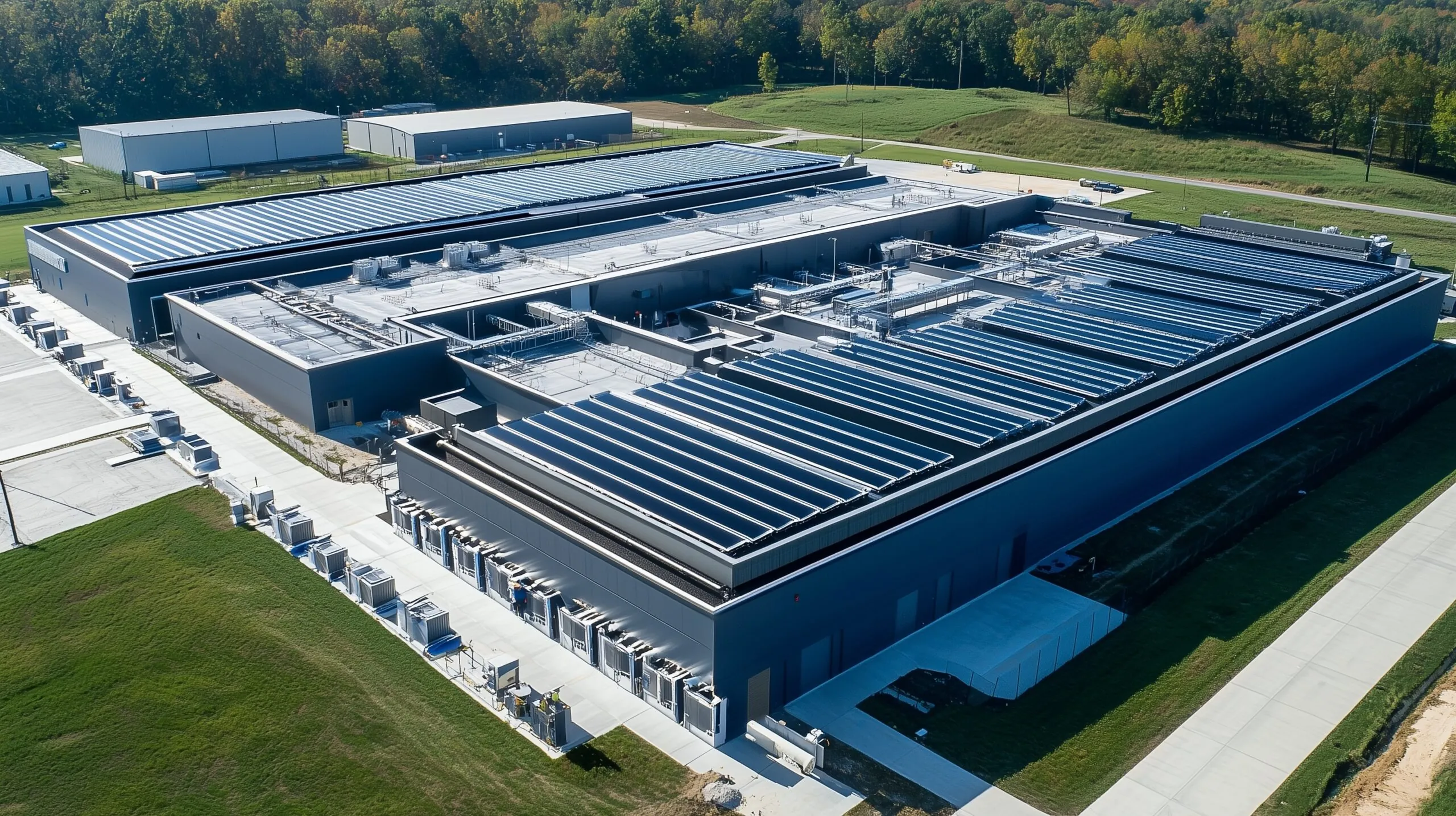What is an Energy-Efficient Data Center?18 min read

The concept of an energy-efficient data center has been discussed extensively, but achieving it is far more complex than most people may realize. This complexity arises from the fact that there are numerous components that influence data center efficiency, yet most discussions in the industry tend to focus solely on Power Usage Effectiveness (PUE). While PUE is an important metric and certainly has its place in the conversation, it is not a genuine indicator of overall data center efficiency. So for this discussion, we will shift our focus to the other factors that contribute to an energy-efficient data center.
Energy Sourcing
In addition to utilizing energy as efficiently as possible internally, a data center should look to source its energy responsibly from external suppliers. Ideally, the data center will secure green energy from a wind or solar farm. In the absence of that, renewable energy credits can offset carbon emissions from the energy being delivered to the data center. Further, many data centers work closely with developers of green energy projects to ensure they gain access to clean energy.
Materials of Construction
The materials of construction in the data center have come under the microscope in recent years. The amount of carbon produced in the manufacture and distribution of concrete, for instance, has become a matter of concern. Portland cement, in particular, has a high carbon footprint. Various alternatives are being evaluated. For instance, a company known as Blue Planet is using CO2 as part of a process to create net zero-carbon concrete. Mass timber is another alternative to concrete and steel in data center construction. Mass timber is basically engineered wood products made from smaller wood elements such as dimension lumber, veneers, or strands and connecting them with adhesives, dowels, nails or screws to create load-bearing building components. It is being used as beams, columns, floor and wall panels, roof rafters, and more. However, mass timber may not be a good option for data halls as it may not be able to take the load. Engineers and architects should determine those areas of the data center where it makes sense based on its tensile strength, fire resistance, and cost.
Product Lifecycle
Some products that claim green or low-carbon status may not be all that they seem when viewed with a critical eye across their entire lifecycle. Environment product declaration (EPD) provides standardized environmental information about the lifecycle impact of a product. EPDs are independently verified and utilized as part of lifecycle assessments (LCA) that are used in sustainability measurements across a vendor’s entire supply chain. These assessments unearth issues such as children being used in mining, poor recycling and disposal practices, and reliance on fossil fuels. Green Globes certification by the Green Build Initiative (GBI) takes such factors into account.
Embodied Carbon
The U.S. EPA defines embedded carbon as the amount of greenhouse gas (GHG) emissions associated with the upstream—extraction, production, transport, and manufacturing—stages of a product’s life. Hence, embodied carbon is being incorporated into the calculations of EPD and GBI certification programs. Smarter material choices and design changes can substantially lower carbon emissions without compromising cost or performance. Carbon Usage Effectiveness (CUE) is another metric that is being used in some data centers. It contrasts the amount of carbon emissions produced per unit of computing work performed. It is calculated by dividing the total CO2 emissions from data center energy by energy consumption of IT equipment.
Water Usage
Water is a growing concern in many areas due to current or expected future water stress. Water Usage Effectiveness (WUE) is another useful metric in measuring the amount of water used by data centers to cool IT assets. Operators should also consider other factors beyond WUE such as water availability and quality, the water used by the local grid in producing electricity, which can make on-site water use preferable in some cases. Water demands vary depending on how the facility is set up with traditional chillers or high-density closed loop surface contact liquid cooling. As well as water usage, further factors to consider are the amount of water that can be reclaimed and reused, how much water loss is happening via evaporation, how much potable water is being turned into wastewater, and more. The energy-efficient data center would demonstrate responsible use of power and water.
Scope 1, 2, and 3 Emissions
Scope emissions are another area impacting the data center. The US Environmental Protection Agency (EPA) defines emissions ratings as follows (and offers guidance on how to count them):
- Scope 1emissions are greenhouse gases (GHG) released directly from sources that an organization owns or controls, such as emissions from fuel combustion in company-owned boilers, furnaces, or vehicles. Diesel generators are a big contributor to data center Scope 1 emissions.
- Scope 2emissions are the indirect greenhouse gases from the generation of purchased energy, including electricity, steam, heat, or cooling. While these emissions occur at the source of energy production, they are included in an organization’s GHG inventory due to their energy consumption. Sourcing green energy is the best way to lower Scope 2 emissions.
- Scope 3emissions stem from activities linked to assets not owned or directly controlled by the reporting organization but that occur within its value chain. These emissions are indirectly influenced by the organization’s operations and are much harder for data centers to address as they are based on various layers of assumption. They are probably more relevant to those building data centers, hyperscalers, and large colocation firms.
These are just a few of the many factors that data center managers must consider as they strive to achieve true energy efficiency and sustainability.
Real-time monitoring, data-driven optimization.
Immersive software, innovative sensors and expert thermal services to monitor,
manage, and maximize the power and cooling infrastructure for critical
data center environments.
Real-time monitoring, data-driven optimization.
Immersive software, innovative sensors and expert thermal services to monitor, manage, and maximize the power and cooling infrastructure for critical data center environments.

Drew Robb
Writing and Editing Consultant and Contractor
0 Comments